How to care for yuzu: Grow this foodie favourite in New Zealand
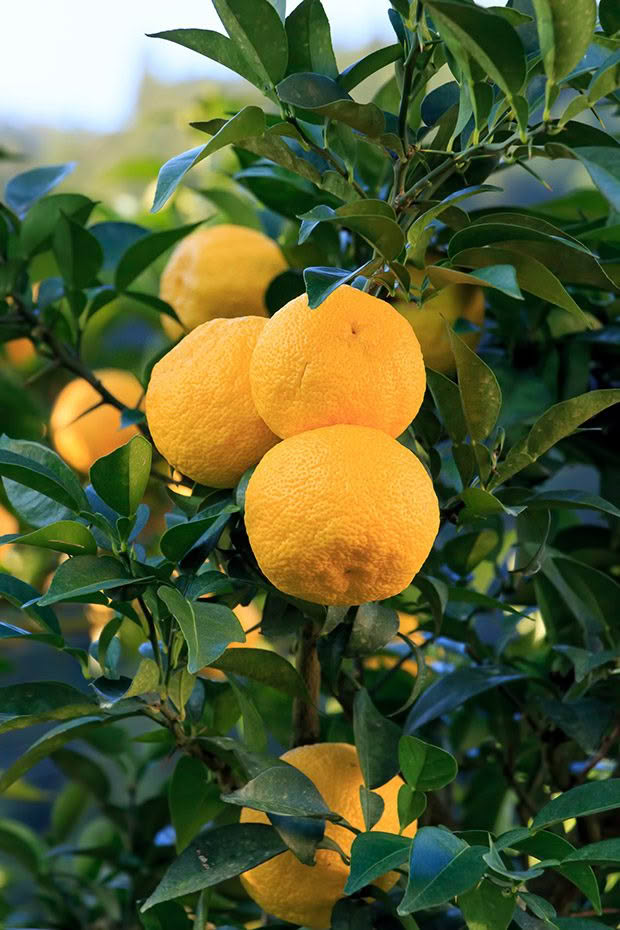
This lip-puckering chef favourite can easily be grown at home.
Words: Nadene Hall Images: William Chun, Neville Chun
The hottest new citrus on the chopping block is not eaten fresh, has barely any juice and its harvest is fraught with risk of deep scratches. “This makes growing yuzu a bad business plan,” says Neville Chun, New Zealand’s largest commercial grower.
Neville, formerly in the garden centre business, did not know about this variety of citrus until 2009 when his wife Junko, who is Japanese, asked for a tree.
READ MORE: 4 delicious ways to cook with and preserve yuzu (plus ponzu dipping sauce recipe)
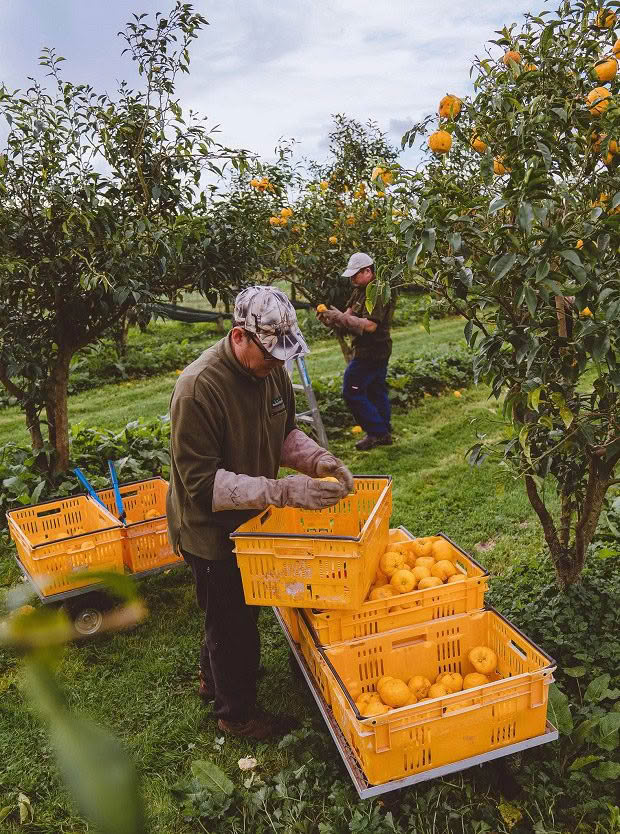
Unpruned, yuzu will sprawl out to 3m wide. It’s dense foliage and sharp thorns make it impossible to pick the fruit. The Chuns prune their trees to a ‘vase’ shape, creating an open centre for easier harvest.
Neville went on a quest to find one and it took him a year. “I finally came across a citrus grower with them in his ornamental section. He listed the yuzu with a really brief description: Very sour, very thorny.”
Neville bought the lot. Today, he and Junko have a 1ha yuzu orchard in the Horowhenua district with 500 trees and they sell fruit directly to food producers, chefs, brewers and the Wellington speciality food market Moore Wilson’s.
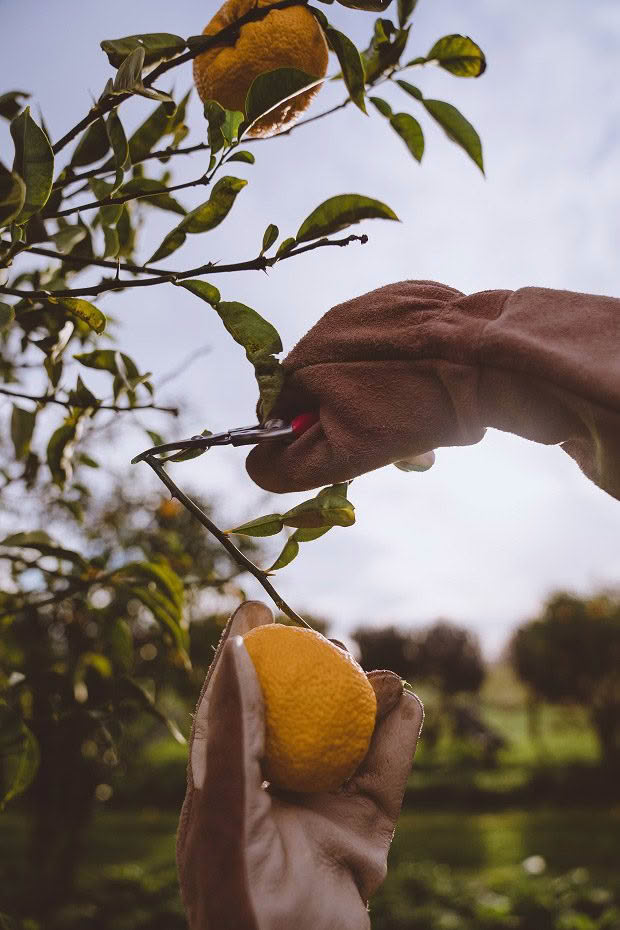
They also sell yuzu fruit directly to consumers (message Neville via the NZYuzu Facebook page).
WHAT IS YUZU?
Yuzu (Citrus junos) is a naturally occurring hybrid of the Satsuma mandarin and another citrus, the rare Ichang papeda. It was discovered by US Botanist Frank Meyer, who also found the lemon variety that now bears his name (Meyer).
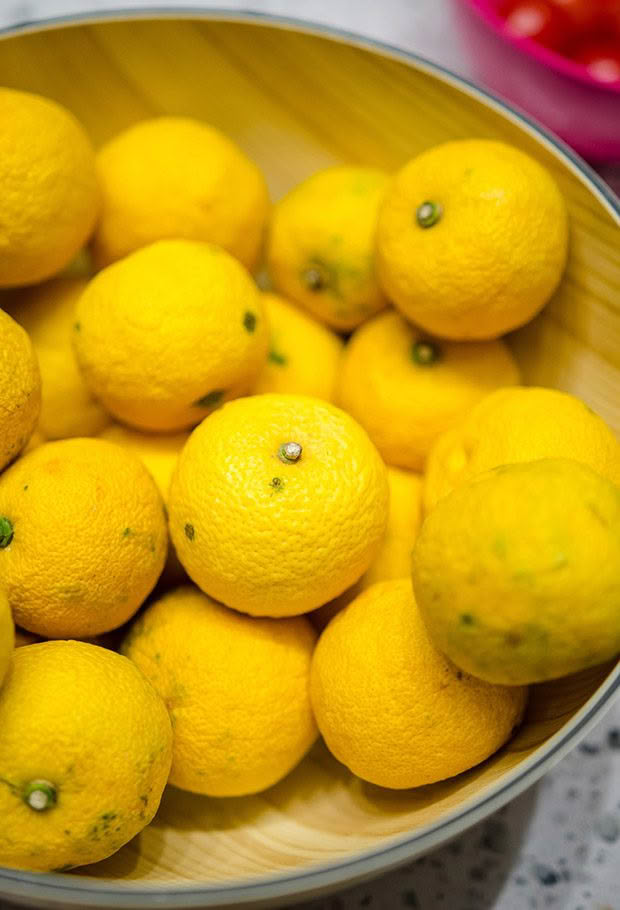
Ripe yellow yuzu is about the size of a lemon, but flatter like a mandarin or a very small grapefruit, with lumpy skin, very little flesh or juice and mostly membrane and seeds.
HOW TO GROW YUZU
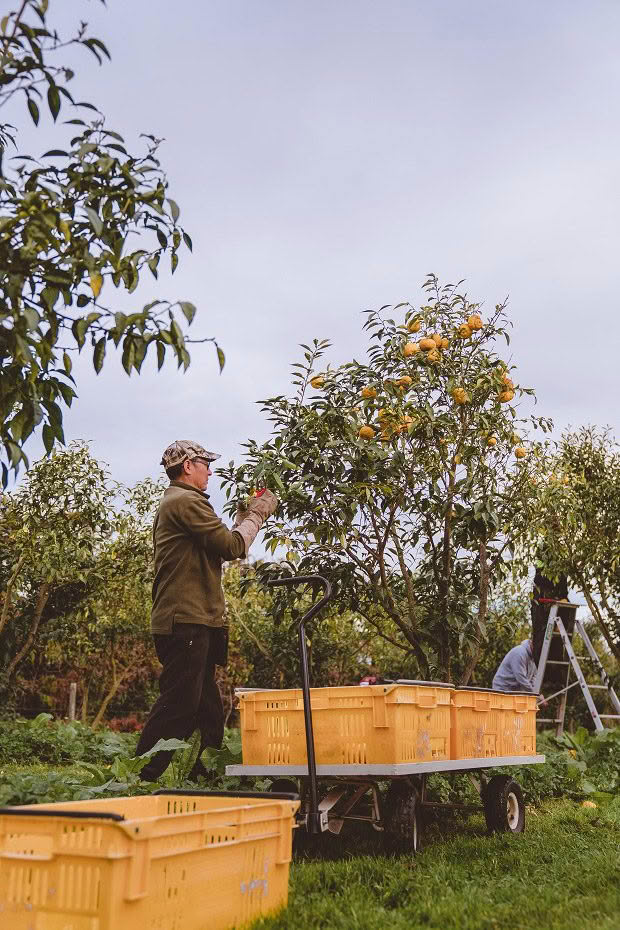
Neville and Junko keep their trees around 2.5m for easier picking. In the wild, a yuzu tree reaches over 3m.
Size: bushy shrub-tree (3.5m high x 2-3m wide)
Flowers: summer, self-pollinating
Fruit: ripen mid-May-July
Notes: sharp thorns on branches, 3-4cm long
Yuzu trees do best in typical citrus growing conditions: full sun; free-draining, organically enriched soil; shelter from the wind.
Young trees need to be kept free of weeds and grass and protected from rabbits and hares who also enjoy the yuzu taste. Neville uses a lot of organic fish fertiliser and oils, soil stimulants, and organic sprays. The biggest problem is thrips, which can damage leaves and fruit. He doesn’t irrigate his trees and says most of the time he doesn’t need to, but he has lost young trees during very dry summers.
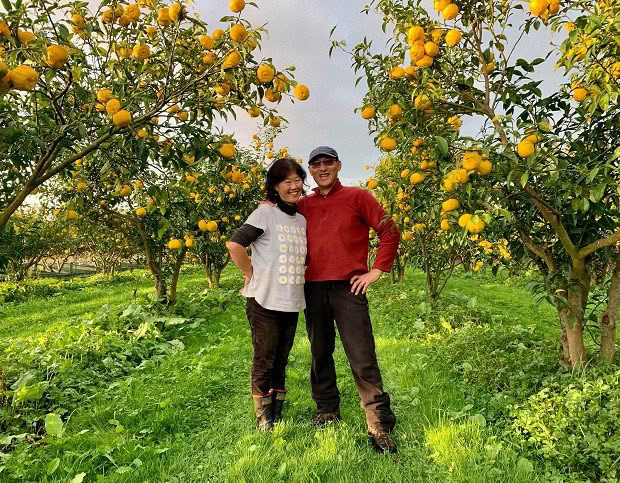
Yuzu trees are more cold-hardy than most citrus. In Japan, Neville and Junko have seen orchards growing on mountainsides where the trees survive the cold but require protection from the wind.
One of the drawbacks of yuzu is its thorns. Neville and Junko prune their trees in a vase shape, typically used for apple, pear, and peach trees. This minimizes the risks of reaching deep into the tree to pick the soft, easily damaged fruit. For picking and pruning, Neville and Junko wear long sleeves and long leather gloves.
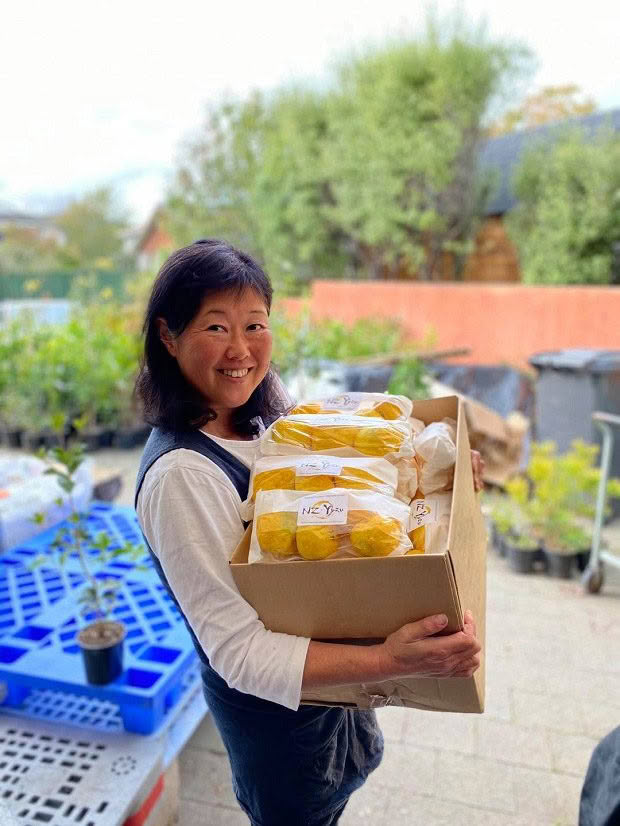
“The thorns are huge, long and among the sharpest things I’ve come across. You’ve got to be completely aware of what you’re picking and how you get into the tree to get it. That’s why you need a vase shape, or you’ll have trouble getting your arm back out.”
READ MORE
Introducing the new foodie favourite finger limes — how to grow them in New Zealand

